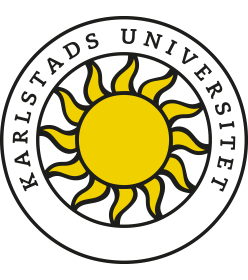Biochemistry
7.5 ECTS creditsLearning outcome 1: Animal and plant cells and prokaryote cells
Learning outcome 2: Proteins, carbohydrates, lipids and nucleic acids. The function of proteins as catalysts, receptors and transporters. Inhibition of enzymatic catalysing reactions. The function of carbohydrates and lipids in energy conversion. The functions of lipids and proteins in membranes. The function of DNA as conveyor of the genetic information. The function of RNA in expressing the genetic information.
Learning outcome 3: Replication, transcription, and translation.
Learning outcome 4: Chromatographic methods such as gel filtration, ionic and affinity chromatografic exchange. Electrophoretic methods such as native and denaturating polyacrylamide gel electrophoresis, isoelectric focusing, two-dimensional electrophoresis, and agarose gel electrophoresis. Methods of DNA technology such as PCR, DNA cleavage with restriction enzymes, gene cloning, DNA sequencing.
Learning outcomes 5 & 6: Glycolysis, citric acid cycle, the mitocondrial electron transport chain and the light and dark reactions of the photosynthesis. The chemiosmotic principle.
Learning outcome 7: Laboratory experiments according to instructions.
Learning outcome 8: Protocol and reports based on laboratory experiments.
Learning outcome 2: Proteins, carbohydrates, lipids and nucleic acids. The function of proteins as catalysts, receptors and transporters. Inhibition of enzymatic catalysing reactions. The function of carbohydrates and lipids in energy conversion. The functions of lipids and proteins in membranes. The function of DNA as conveyor of the genetic information. The function of RNA in expressing the genetic information.
Learning outcome 3: Replication, transcription, and translation.
Learning outcome 4: Chromatographic methods such as gel filtration, ionic and affinity chromatografic exchange. Electrophoretic methods such as native and denaturating polyacrylamide gel electrophoresis, isoelectric focusing, two-dimensional electrophoresis, and agarose gel electrophoresis. Methods of DNA technology such as PCR, DNA cleavage with restriction enzymes, gene cloning, DNA sequencing.
Learning outcomes 5 & 6: Glycolysis, citric acid cycle, the mitocondrial electron transport chain and the light and dark reactions of the photosynthesis. The chemiosmotic principle.
Learning outcome 7: Laboratory experiments according to instructions.
Learning outcome 8: Protocol and reports based on laboratory experiments.
Progressive specialisation:
G1N (has only upper‐secondary level entry requirements)
Education level:
Undergraduate level
Admission requirements:
Registered for Introductory Chemistry, 7.5 ECTS credits, or Matter, 7.5 ECTS credits, and Chemical Calculations, 7.5 ECTS credits, or equivalent
Selection:
Selection is usually based on your grade point average from upper secondary school or the number of credit points from previous university studies, or both.
This course is included in the following programme
- Drug Analysis - Bachelor Programme in Chemistry (studied during year 1)
- Master of Science in Chemical Engineering (studied during year 3)
